April 2025
The global freight trucking market is projected to reach USD 466.99 billion by 2034, growing from USD 307.29 billion in 2025, at a CAGR of 4.76% during the forecast period from 2025 to 2034.
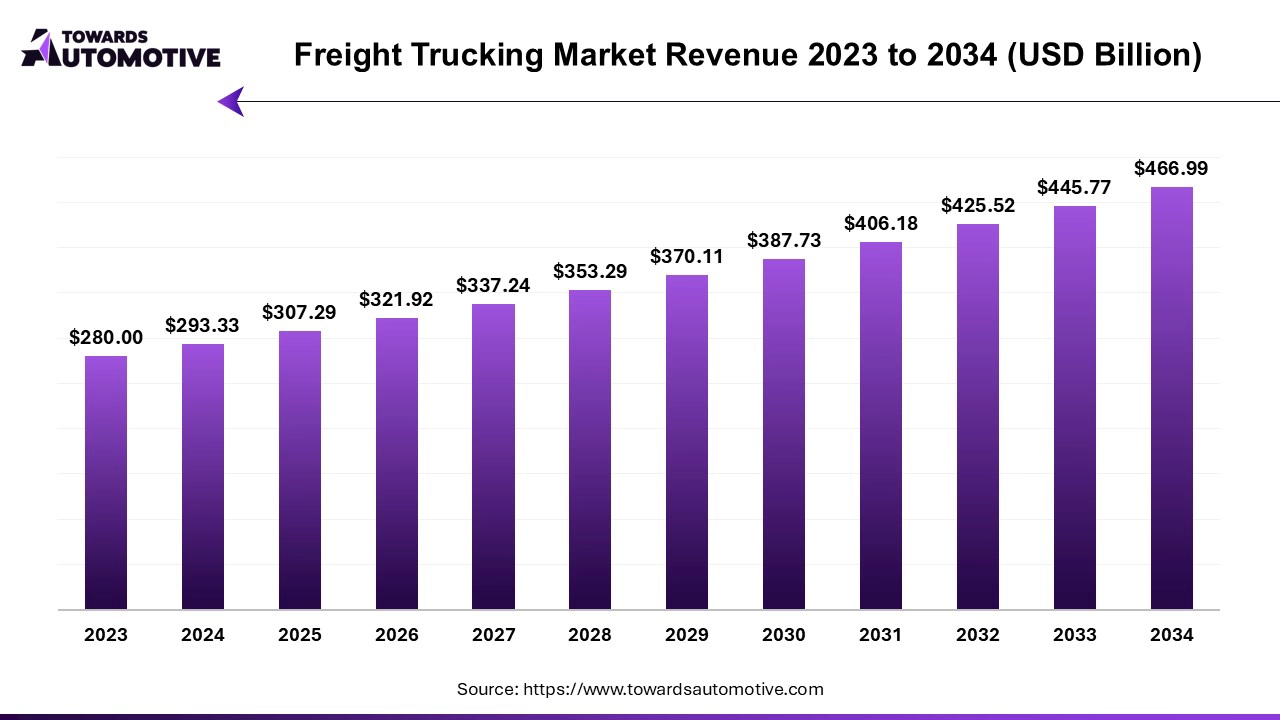
Unlock Infinite Advantages: Subscribe to Annual Membership
The freight trucking market plays a crucial role in the global transportation and logistics industry, serving as the backbone for moving goods across regions, countries, and continents. This market is driven by the growing demand for the efficient movement of raw materials, consumer goods, and industrial products, fueled by expanding e-commerce, manufacturing, and international trade. Freight trucks are integral to supply chain operations, providing flexible and reliable transportation solutions that can reach areas not easily accessible by rail or sea transport.
Technological advancements, such as the adoption of telematics, route optimization software, and the rise of autonomous and electric trucks, are significantly transforming the freight trucking industry. These innovations enhance operational efficiency, reduce fuel consumption, and improve delivery times, thereby meeting the increasing demands of the modern supply chain.
Additionally, rising consumer expectations for faster delivery, particularly in the e-commerce sector, are pushing trucking companies to optimize last-mile delivery solutions. The ongoing development of smart logistics, sustainability initiatives, and government regulations aimed at reducing carbon emissions are also influencing the industry’s evolution. As businesses prioritize supply chain resilience and efficiency, the freight trucking market is poised for continued growth, adapting to the changing dynamics of global trade and logistics.
AI plays a transformative role in the freight trucking market by enhancing efficiency, safety, and decision-making across the industry. One of the primary benefits of AI is its ability to optimize route planning and fuel efficiency. By analyzing vast amounts of data on traffic patterns, weather conditions, and delivery schedules, AI-powered systems can recommend the most efficient routes, reducing fuel consumption and travel time. This not only improves operational efficiency but also minimizes costs, which is crucial in an industry with tight profit margins.
AI also contributes to predictive maintenance, allowing trucking companies to proactively address vehicle issues before they result in breakdowns. By analyzing sensor data from trucks, AI can predict potential mechanical failures and alert fleet managers, preventing costly downtime and improving fleet reliability.
Additionally, AI plays a significant role in enhancing safety through the development of advanced driver assistance systems (ADAS). These systems use AI to monitor driver behavior, detect fatigue, and alert drivers to potential hazards, reducing the likelihood of accidents. Autonomous trucks, powered by AI, are also beginning to emerge, which could revolutionize the industry by reducing the need for human drivers and improving efficiency.
The growing demand for pharmaceutical products is significantly driving the growth of the freight trucking market, particularly in the specialized sector of temperature-controlled logistics. As the global pharmaceutical industry expands, the need for timely and safe transportation of medicines, vaccines, and medical supplies has intensified. Pharmaceuticals often require specific temperature conditions, strict handling protocols, and rapid delivery to ensure their efficacy. Freight trucking companies have responded by investing in advanced refrigerated trucks (known as reefers) and adopting real-time tracking systems to monitor the condition of sensitive cargo.
The COVID-19 pandemic has further amplified the demand for reliable freight trucking services, as the global distribution of vaccines and other medical supplies required a robust, efficient, and safe logistics network. This surge in demand has led to the growth of dedicated pharmaceutical transportation services, with trucking companies partnering with healthcare providers, research labs, and government agencies to meet critical delivery timelines.
Moreover, as pharmaceutical companies expand their operations into emerging markets, the need for long-haul and last-mile delivery services has grown, creating additional opportunities for the freight trucking sector. With the rise of personalized medicine and the increasing need for just-in-time delivery of pharma products, freight trucking is poised for continued growth in this essential sector.
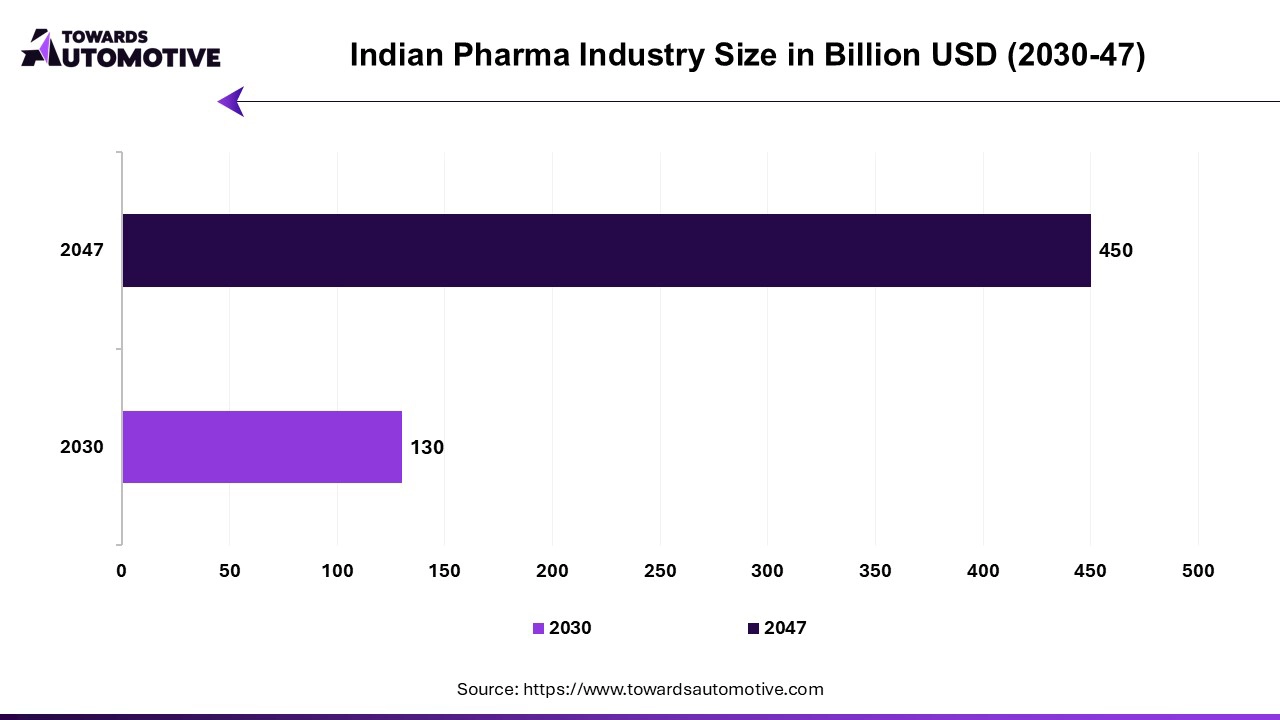
The freight trucking market faces several restraints that hinder its growth. One major challenge is the rising fuel costs, which directly impact operational expenses and reduce profit margins for trucking companies. Additionally, the ongoing driver shortage exacerbates supply chain inefficiencies, as companies struggle to meet delivery demands. Regulatory constraints, such as stringent emissions standards and safety regulations, also add to the cost burden, requiring investment in cleaner technologies and compliance measures. Furthermore, traffic congestion and deteriorating infrastructure in many regions lead to delays, reducing the overall efficiency of freight transportation. These factors collectively restrain the market's potential expansion.
Autonomous trucks are creating significant opportunities in the freight trucking market, revolutionizing how goods are transported over long distances. One of the primary advantages of autonomous trucks is their potential to address the ongoing driver shortage, which has been a critical issue in the industry. By reducing the dependency on human drivers, these self-driving vehicles can operate for extended hours without the need for rest breaks, increasing efficiency and minimizing delivery times.
Additionally, autonomous trucks are expected to reduce operational costs. With the use of AI and advanced sensor technologies, these vehicles can optimize fuel consumption, lower accident risks, and minimize wear and tear through precise driving patterns. This leads to reduced maintenance and insurance costs, enhancing overall profitability for trucking companies.
Autonomous technology also improves safety on the roads. These trucks use real-time data, sensors, and cameras to make split-second decisions, reducing the chances of accidents caused by human error. As governments and industries focus more on improving road safety and minimizing accidents, autonomous trucks align with these goals, further driving their adoption.
Moreover, with growing investments in autonomous driving technologies and regulatory support, autonomous trucks offer a sustainable and scalable solution for the future of logistics, providing a competitive edge in the freight trucking market.
The dry van segment held the largest share of the market. The dry van segment plays a critical role in driving the growth of the freight trucking market, particularly due to its versatility and widespread use across various industries. Dry vans, which are enclosed trailers used to transport non-perishable goods, offer protection from external elements such as weather, debris, and theft. This makes them highly suitable for transporting a wide range of goods, from consumer products to electronics, automotive parts, and retail goods, contributing significantly to market expansion.
One of the key factors fueling the growth of the dry van segment is the surge in e-commerce. With the continuous rise of online shopping, retailers require efficient and secure methods of transporting goods to distribution centers and customers. Dry vans, being one of the most common types of trailers, are well-positioned to handle the high volume of shipments generated by the e-commerce boom. Their capacity and adaptability allow businesses to transport goods in bulk, reducing transportation costs and improving operational efficiency.
Moreover, dry vans are favored in sectors like consumer goods, manufacturing, and retail, where the need for reliable and large-scale transportation is critical. This widespread demand has resulted in an increase in investments in the dry van trucking fleet, further driving market growth. Additionally, advancements in logistics technology, including real-time tracking and fleet management solutions, have enhanced the efficiency of dry van transportation, making it an attractive option for companies looking to optimize their supply chain.
The agriculture segment led the industry. The agriculture segment plays a vital role in driving the growth of the freight trucking market by facilitating the transportation of agricultural products from farms to processing facilities, markets, and distribution centers. Agricultural goods, such as crops, livestock, dairy products, and raw materials, rely heavily on trucking for timely and efficient transportation. Freight trucks provide the necessary capacity to move large quantities of perishable and non-perishable agricultural goods across vast distances, ensuring that these products reach consumers and industries on time.
One of the major factors driving this growth is the increasing demand for fresh produce and food products, both domestically and internationally. As the global population continues to grow, there is a rising need for efficient transportation solutions to support the food supply chain. Freight trucks are essential for moving agricultural products from rural areas to urban centers, where demand for food is highest. The ability of trucks to offer flexibility in delivery schedules, coupled with the growing emphasis on maintaining the freshness of produce through temperature-controlled freight, has further boosted the role of the agriculture segment in freight trucking.
Additionally, technological advancements in freight trucking, such as GPS tracking, route optimization, and real-time monitoring, have improved the efficiency of transporting agricultural goods. This has reduced delivery times and minimized spoilage, enhancing profitability for farmers and distributors. Moreover, the expansion of cross-border agricultural trade has increased the demand for reliable freight trucking services to handle the movement of goods between countries and regions.
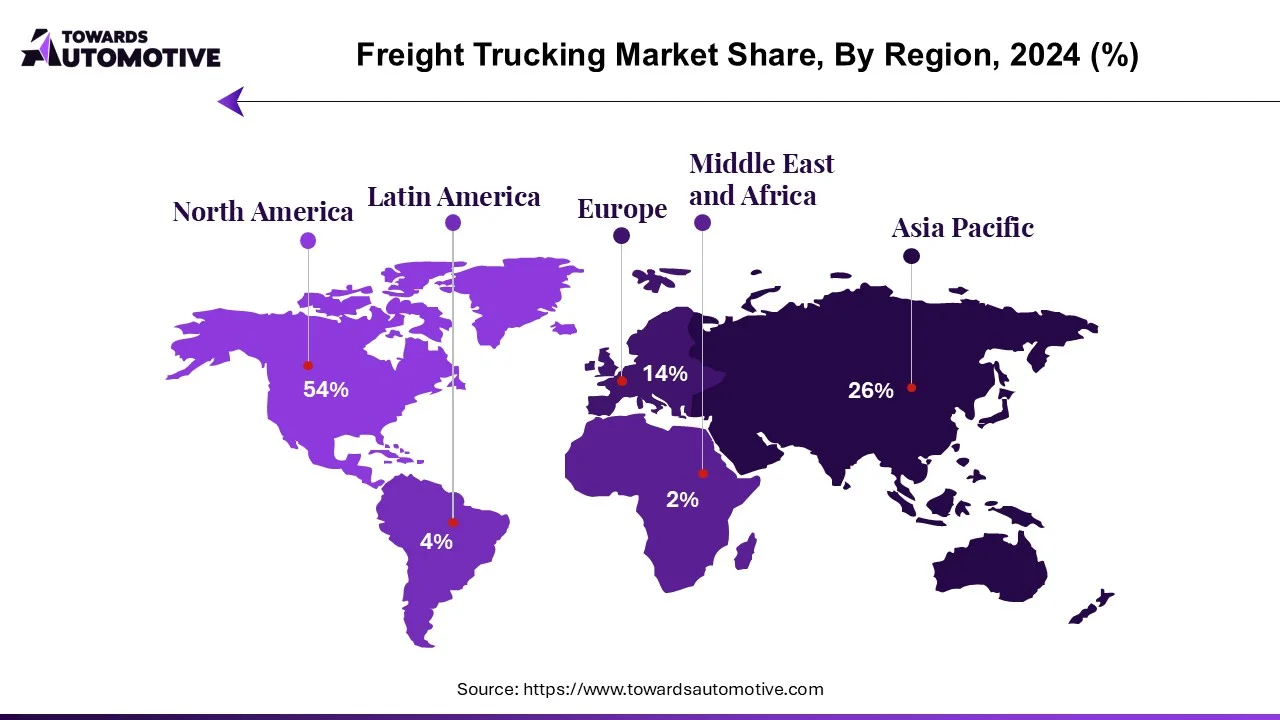
North America dominated the freight trucking market. The growth of the freight trucking market in North America is significantly driven by e-commerce expansion, infrastructure investments, and cross-border trade. The rapid rise of e-commerce has dramatically reshaped the logistics landscape. With more consumers opting for online shopping, the demand for timely and efficient delivery services has surged. This has led to a boom in last-mile delivery services, where freight trucking plays a crucial role in meeting the expectations of fast and flexible deliveries. Retail giants like Amazon and Walmart are increasingly relying on freight trucking to meet the demand for same-day and next-day deliveries, fueling growth in the market.
Infrastructure investments across North America are also playing a pivotal role. Governments are pouring resources into upgrading road networks, bridges, and transportation corridors. In the United States, initiatives like the Infrastructure Investment and Jobs Act (IIJA) have allocated billions of dollars to modernizing transportation infrastructure, reducing bottlenecks and improving freight mobility. These developments are enabling trucking companies to operate more efficiently, reduce transit times, and expand their service capabilities.
Furthermore, cross-border trade between the U.S., Canada, and Mexico, facilitated by trade agreements like the United States-Mexico-Canada Agreement (USMCA), is driving demand for freight trucking. The strong flow of goods across borders necessitates reliable and extensive trucking networks, as freight trucks are essential for moving products between these countries. The seamless movement of goods across these borders strengthens the regional supply chain and contributes to the steady growth of the freight trucking market in North America.
Asia Pacific is expected to grow with the highest CAGR during the forecast period. The freight trucking market in the Asia-Pacific (APAC) region is experiencing robust growth, driven by industrial growth and urbanization, government support and initiatives, and the expansion of regional supply chains.
Rapid industrial growth and urbanization in APAC are significantly boosting demand for freight trucking services. As economies in countries like China, India, and Southeast Asian nations continue to industrialize, there is a rising need to transport raw materials, manufactured goods, and consumer products across vast distances. The growing urban population is also contributing to increased demand for efficient logistics solutions, as more goods are needed in urban centers to meet consumer demand.
Government support and initiatives across APAC are further enhancing the growth of the freight trucking market. Many countries are investing in transportation infrastructure, including highways and logistics hubs, to improve the efficiency of freight movements. China’s Belt and Road Initiative (BRI), for example, has led to substantial improvements in trade routes and logistics networks across Asia. Additionally, various government policies encouraging the modernization of the trucking fleet and the adoption of cleaner technologies, such as electric trucks, are helping to advance the market.
Regional supply chains are also playing a crucial role in driving market growth. APAC countries are increasingly focusing on strengthening intra-regional trade and building resilient supply chains. The emergence of new trade agreements, such as the Regional Comprehensive Economic Partnership (RCEP), has facilitated smoother cross-border freight transportation. These factors are collectively propelling the growth of the freight trucking market across APAC, ensuring it remains a key player in the region’s logistics ecosystem.
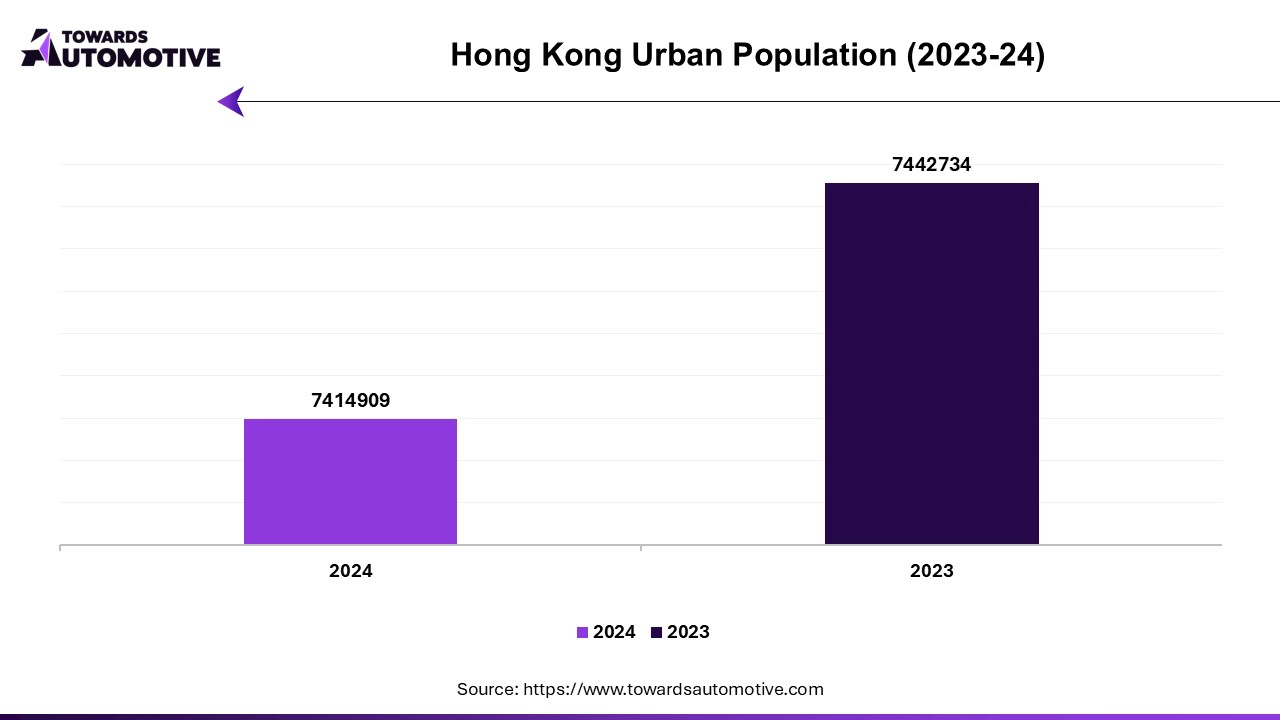
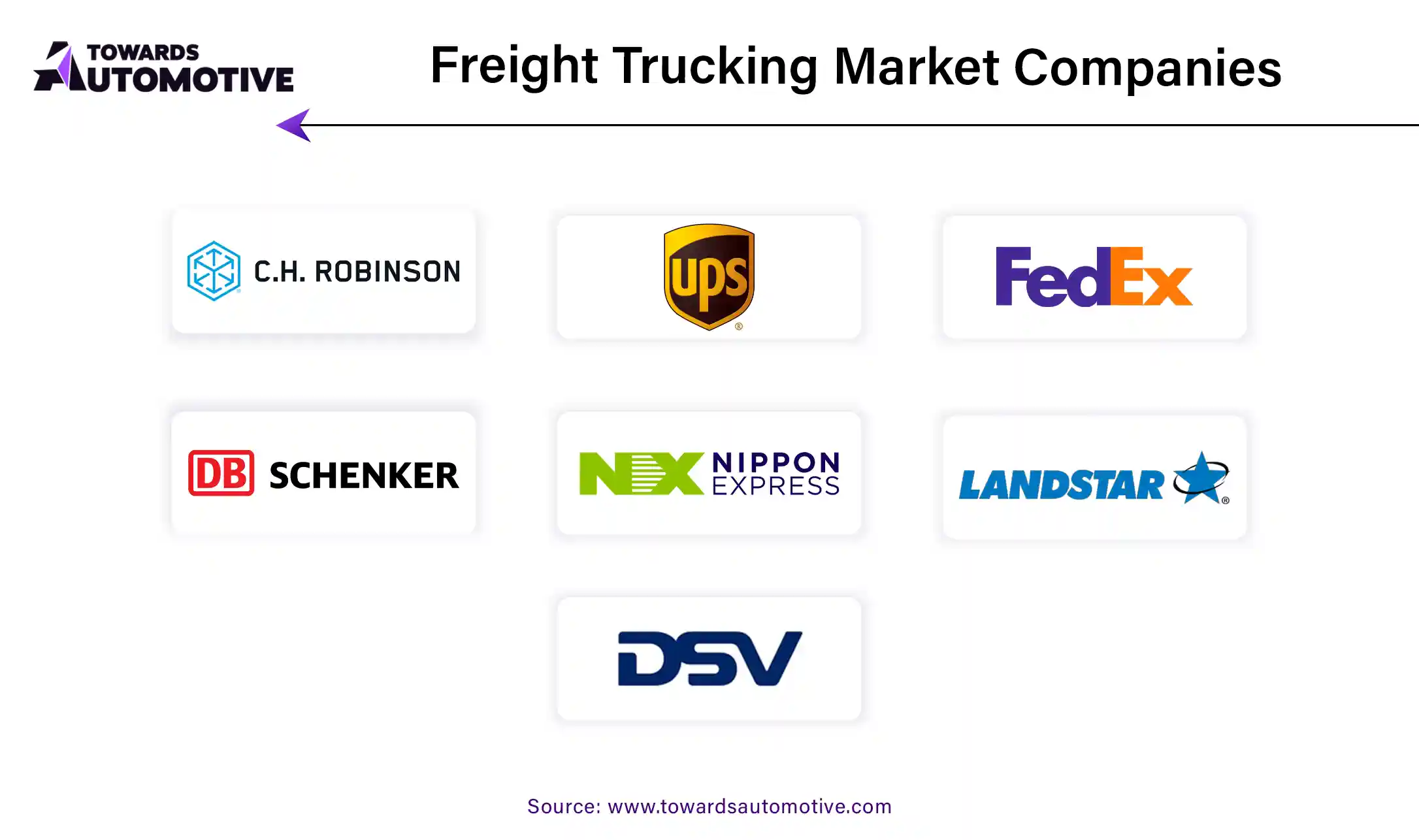
By Truck Type
By End-User
By Region
April 2025
April 2025
April 2025
April 2025
We offer automotive expertise for market projections and customizable research, adaptable to diverse strategic approaches.
Contact Us